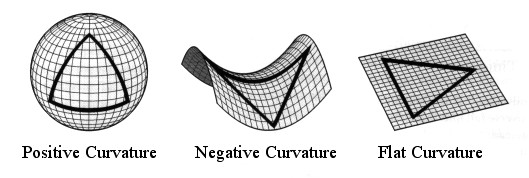Physicist: If you ever hear a physicist talking about “the edge of the universe”, what they probably mean is “the edge of the visible universe”. The oldest light (from the most distant sources) is around 15 billion years old. Through a detailed and very careful study of cosmic inflation we can estimate that those sources should now be about 45 billion light years away. So if you define the size of the visible universe as the present physical distance (in terms of the “co-moving coordinates” which are stationary with respect to the cosmic microwave background) to the farthest things we can see, then the edge of the visible universe is 45 billion light years away (give or take). However, that “edge” doesn’t mean a lot. It’s essentially a horizon, in that it only determines how far you can see.
Of course, if you wanted to know “how far can we see?” you would have asked that. The picture of the universe that most people have is of a universe enclosed in some kind of bubble. That is, the picture that most people have is of a universe that has an edge. However, there are some big problems with assuming that there’s a boundary out there.
If you decide that space suddenly ends at an edge, then you have to figure out how particles would interact with it. Obviously they can’t keep going, but bouncing off or stopping both violate conservation of momentum, and disappearing violates conservation of mass/energy. Moreover, if you say that spacetime has a definite edge at a definite place then you’re messing with relativistic equivalence (all of physics works the same in all positions and velocities). It may seem easy to just put an asterisk on relativity and say that there’s an exception where the edge of the universe is concerned, but the math isn’t nearly as forgiving.
The nicest theories today suggest that there is no boundary to the universe at all. This leads to several options:
1) A negatively curved, infinite universe. This option has been ruled out by a study of the distribution of the Cosmic Microwave Background.
2) A flat (non-curved), infinite universe. The measurements so far (devotees may already know how to do these measurements) show that space is flat, or very very nearly flat. However, infinite universes make everyone nervous. An infinite universe will repeat everything in the visible universe an infinite number of times, as well as every possible tiny variation, as well as every vastly different variation. All philosophy aside, what really bothers physicists is that an infinite (roughly homogeneous) universe will contain an infinite amount of matter and energy. Also, the big bang (assuming that the Big Bang happened) would have had to happen everywhere at once. As bad as the mathematical descriptions of the Big Bang traditionally are, an infinitely large Big Bang is much worse.
3) A curved, finite universe. This is the best option. You can think of the universe as being a 3-dimensional space that is the surface of a 4-dimensional ball, in the same way that the surface of a balloon is a 2-dimensional space wrapped around a 3-dimensional ball. Of course, this immediately begs the question “what’s inside the ball?”. Well, keep in mind that what defines a space is how the things inside it relate to each other (the only thing that defines space is rulers). So even if you turned the “balloon” inside-out you’d still have the same space. Or, if you’re not a topologist, then remember that there’s nothing outside of space, and the surface of the 4-d sphere is space. Now, be warned, the “3-d surface of a 4-d ball” description isn’t entirely accurate. Right of the bat, we don’t live in 3 dimensions, we live in 3+1 dimensions (not “space” but “spacetime”), and the metric for that is a little weird. Also, when you talk about “the shape of the universe”, you probably mean “the shape of the universe right now”, and sadly there’s no way to universally agree on what “now” means in a universe with any rotating stuff in it. That being said, the “surface of a sphere” thing is still a good way to talk about the universe.
Since our best measurements show that space is very flat, if the universe has taken the 3rd “curved, finite” path (it probably has), then it must be really really big. This is for the same reason that you can easily show that a ball is curved, but may have some difficulty showing that the Earth is curved.
Also, to answer the original question: the universe doesn’t have an edge.








79 Responses to Q: How far away is the edge of the universe?